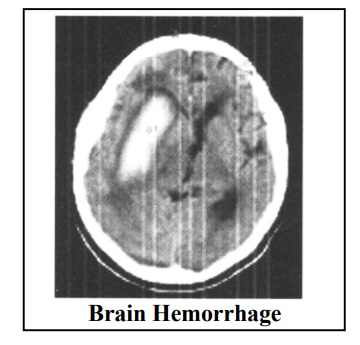Chapter: Diseases of The Brain and Nervous System(A Health Education Guide): Brain Hemorrhage
Subarachnoid Hemorrhage: Symptoms, Diagnosis
Subarachnoid Hemorrhage :
This type of hemorrhage is completely different from the one discussed before. Most of these patients do not suffer from high blood pressure. Many of them are young and in most of them there is a congenital weakness in the blood vessels causing ballooning of the blood vessel (Saccular aneurysm) or entanglement of the vessels (AN. Malformation). These which rupture at a particular age due to sudden exertion or unknown causes, with oozing of blood into the subarachnoid spaces between the membranes of the brain. This is known as the subarachnoid hemorrhage. It is worth noting that out of every 100 people, at least one may be harboring such a congenital aneurysm in the blood vessels of the brain, but it can never be predicted when it may rupture and in many cases it may not rupture during the entire course of life.
Once it ruptures, nearly 45% to 60% patients die within a month. This disease is extremely dangerous and hence it is not only important to understand the disease but also have its early diagnosis before it ruptures. It is surprising that many patients may suddenly suffer from hemorrhage without any warning symptoms. However according to a group ofspecialists, if there is a migraine like headache, strictly only on one side of the brain (like right side, above the ear, behind the eyes), which does not shift to the other side, and recurs frequently, an MR angiography of the brain should be done as a precautionary measure. This test can detect aneurysms of the blood vessels of the brain with an accuracy of 95 to 98%, without any invasive procedure. The cost of this test is about Rs.4000 to 6000/- but whether this test should be done in all such cases is debatable. But in my personal opinion and experience, in migraines, which constantly affect only one particular side of the brain, it is better to get this test done, to exclude aneurysm or A Vmalformation.
The main symptoms of this disease i.e. subarachnoithemorrhage are that the patient experiences a never-before kind of severe headache, sometimes accompanied by a seizure and he might even become unconscious momentarily due to the edema in the brain. Usually the patient regains consciousness in a short while, but may again start losing consciousness after some time, suffer from paralysis and there may be irregularities in the vital functions like respiration, blood pressure or heart. Many such patients die immediately or within 14 to 30 days. Therefore, if the patient feels that he/she has never experienced such a splitting headache before along with other signs and symptoms, it is all the more important for the patient to see a neurologist so that timely treatment may save his / her life.

Related Topics